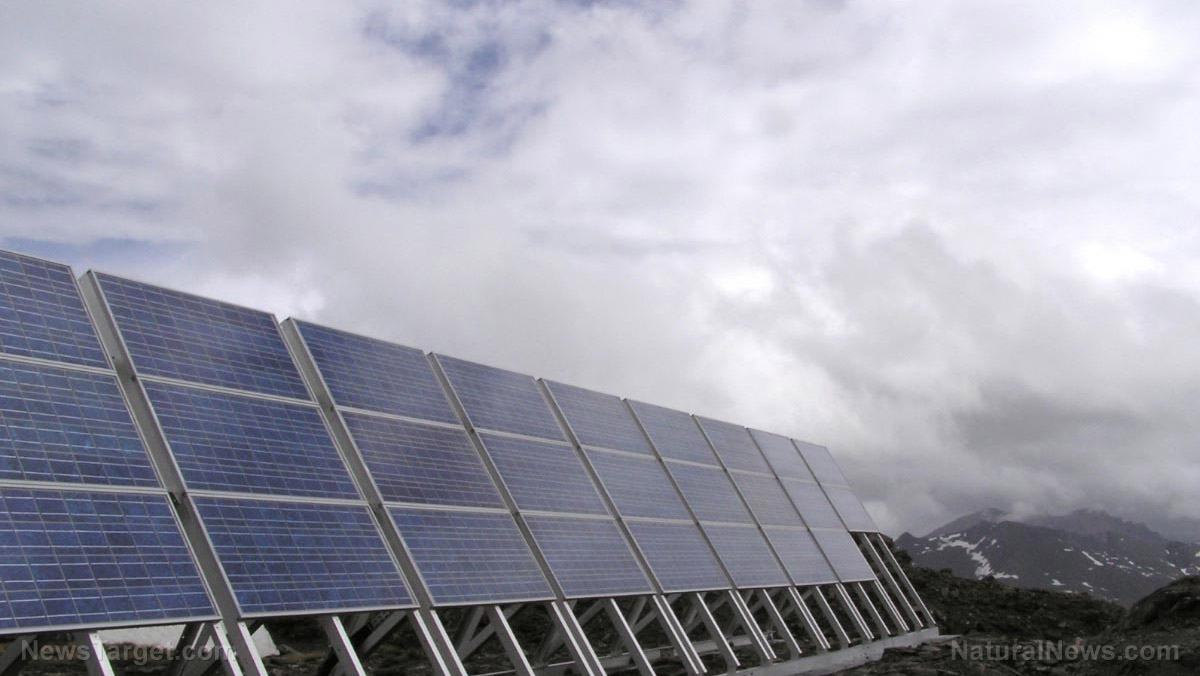
Fabian Karthaus grew up with solar energy. "My father built the first photovoltaic system on the barn roof and you could see that it worked," he said. Now, he owns two large solar power systems with berries growing underneath one of them.
Karthaus took over his father's farm near the western German town of Paderborn five years ago. But the trained electrical engineer still works during the day as a product manager for agricultural electronics. "I can't feed a family with the earnings from growing 80 hectares of field beans, grain, rapeseed and corn crops," he said.
There was also a significant drop in yield over the past few years because of heat and drought. "My wife and I started thinking about how we could continue to operate the farm in a meaningful way," Karthaus said.
That's how the idea of growing berries under a solar roof with translucent modules was born.
"We thought about which kind of berry goes with what sort of light and shade. Blueberries and raspberries are woodland plants, so that works really well," he said.
The first harvest from the seedlings last year was good.
Roofs made of solar modules save water
Usually, the plants are grown outdoors or in foil tunnels. But Karthaus thought the shade under the modules could increase yields. Extremely hot summers are now an increasing problem for plants, even in Germany. Roofs made of solar modules reduce evaporation, saving water in the process.
"We once measured it here. The evaporation is about a quarter compared to plants in the open field," he explained. (Related: Solar panel farm grows 17,000 tons of food without soil, pesticides, fossil fuels or groundwater.)
Of course, the solar modules also provide electricity. With 750 kilowatts of power, the system generates about 640,000 kilowatt-hours a year, which is equivalent to the electricity needs of 160 households.
Karthaus wants to use part of the solar power to operate his own refrigeration and freeze-drying systems. If he had to buy the electricity from the energy supplier, that would cost him around €0.25 ($0.29) per kilowatt-hour.
"It's a win-win situation for everyone. It means that we can generate green power locally, decentralized, where the energy is consumed," said Karthaus.
In Germany, this method of cultivation works well for soft fruits, apples, cherries, potatoes and produce such as tomatoes and cucumbers. Differing plants and module designs might be more suitable in other parts of the world.
Experts see huge potential for agrivoltaics worldwide
One has to estimate the optimal light conditions for the plants as well as local demand for electricity.
"There are big regional differences. It depends on what is being grown, what the climate zones are, what the rural structures are," said Max Trommsdorff, an expert in agrivoltaics at the Fraunhofer Institute for Solar Energy Systems.
Agrivoltaic is the approach to use or develop the same area of land for both solar photovoltaic power and agriculture. (Related: Installing solar panels on farmland could change how we generate power and produce food.)
Trommsdorff and his colleagues advise governments worldwide about agrivoltaics and recently organized an international conference on solar energy and farming. They see huge potential for agrivoltaics worldwide. The vast majority of agrivoltaic plants are found in Asia, but some can also be found in Europe, Mali, Gambia and Chile.
The world's largest agrivoltaic plant, with a capacity of around 1,000 megawatts and covering 20 square kilometers (about 8 square miles), is located on the edge of the Gobi Desert in China. The cultivation of goji berries under the module roofs is intended to make the dry earth fertile again.
Farmers in Japan are already harvesting from more than 2,000 agrivoltaic systems.
"The aim here is to support structural change, stop the rural exodus, and create prospects for the rural population," said Trommsdorff.
France pioneered wine growing under the agrivoltaic system in Europe. The French government provides subsidies for modular roofs that are intended to protect vines.
"Many grape varieties get too much sun and heat due to climate change," Trommsdorff said. "Shade can bring some benefits here."
Renewables company builds one of Europe's largest agrivoltaic projects
German renewables company BayWa r.e. and its Dutch subsidiary GroenLeven have built one of Europe's largest agrivoltaic projects at the Piet Albers fruit farm in Babberich.
"This latest extension to the project involves the installation of 10,250 solar panels across 3.2 hectares of raspberry crops, generating enough clean energy to power close to 1,250 households," said Stephan Schindele, agrivoltaic project manager at BayWa r.e.
"Careful monitoring throughout the pilot study showed that the climate under the panels is in fact more stable than under traditional plastic arches. The panels created a more favorable lower temperature and better protected the crops from the weather."
The project had to overcome a number of challenges in its development, including the fair distribution of scarce photons from the light spectrum for raspberry growing and solar power generation in the same area. BayWa r.e. designed a unique semi-transparent solar module allowing sufficient sunlight for the plants to pass through while at the same time protecting the crop from hail, heavy rain and direct sunlight.
BayWa r.e. and GroenLeven also teamed up with Wageningen University & Research in the Netherlands to investigate four additional test projects that involve other berry crops, including red currant, blueberries, blackberries and strawberries.
"Our new study will investigate the effect of the solar panels on these soft fruits and sensors will monitor the climate under the panels. In addition, we will monitor the plants health and fruit growth," Schindele said.
The ultimate goal is that through research and monitoring, the agrivoltaic projects will show that the solar panels actually improve the quality of the fruits and reduce the cost of production.
Follow SolarPanels.news for more news and information related to solar panels and solar energy.
Sources include:
Please contact us for more information.

















